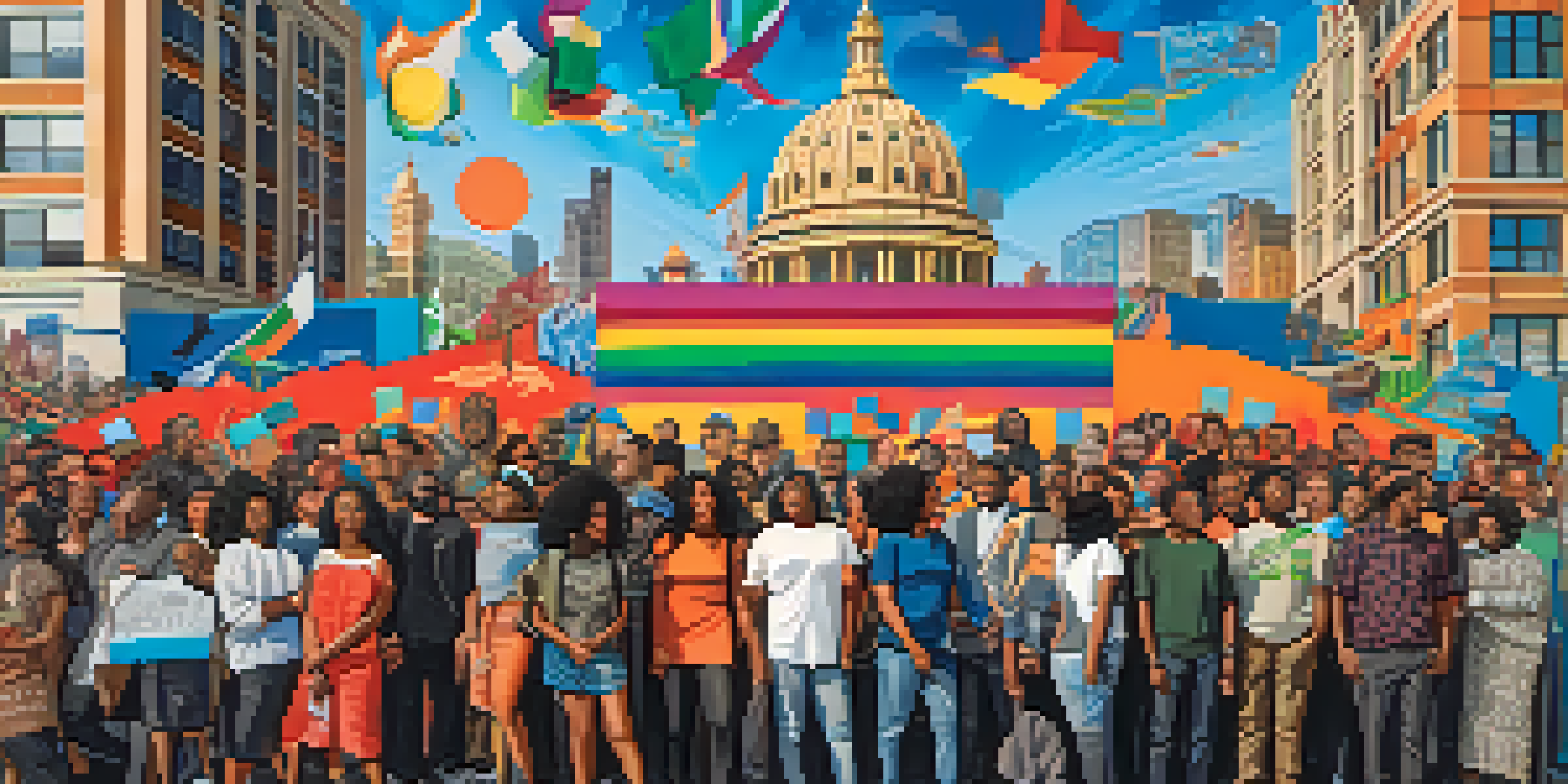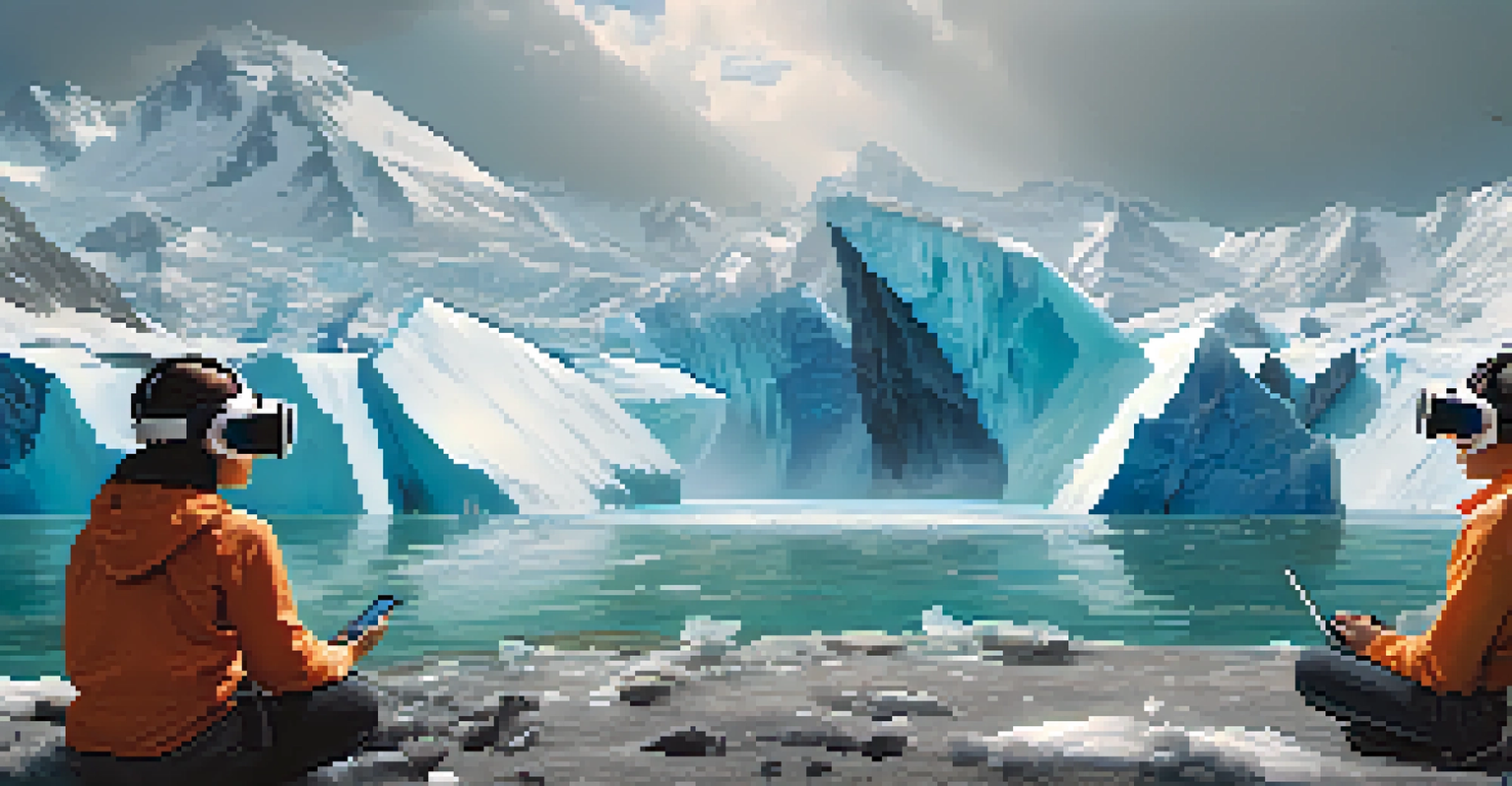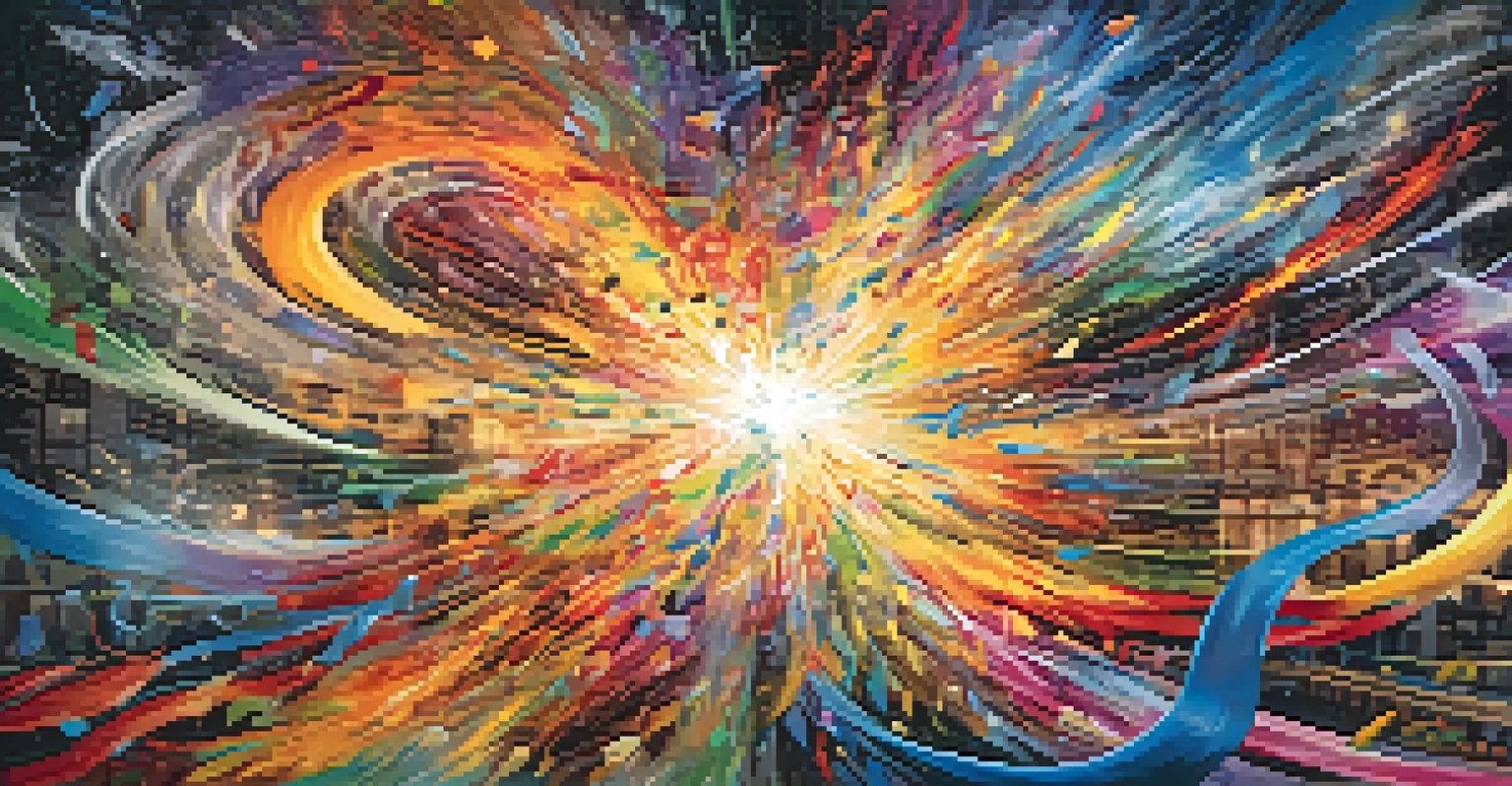Digital Art and Social Issues: Activism in the Online Realm

The Rise of Digital Art in Modern Activism
Digital art has surged in popularity, becoming a powerful tool for activism. Artists are using platforms like Instagram and Twitter to share their messages and engage with audiences worldwide. This form of art transcends geographical barriers, allowing for a global conversation about pressing social issues.
Art is not a mirror to reflect the world, but a hammer with which to shape it.
For example, during significant movements such as Black Lives Matter or climate change rallies, digital artists have created compelling visuals that encapsulate the essence of these movements. This not only raises awareness but also inspires action, encouraging viewers to participate in real-world change.
Related Resource
Moreover, the accessibility of digital art tools means that anyone with a passion for a cause can contribute. This democratization of art allows diverse voices to be heard, enriching the dialogue surrounding social issues.
How Social Media Amplifies Artistic Activism
Social media platforms play a crucial role in amplifying the messages of digital artists. A single tweet or post can go viral, reaching millions and sparking conversations that might not have happened otherwise. This immediacy helps bring attention to urgent social issues, making art a catalyst for social change.

Take, for instance, the viral artwork that accompanies hashtags during movements. These pieces often serve as rallying cries, uniting people under a common cause and providing a visual representation of their struggles. As a result, art becomes a medium through which communities can express their collective grief and hopes.
Digital Art Empowers Activism
Digital art acts as a powerful tool for activism, enabling diverse voices to engage in global conversations about social issues.
Additionally, social media allows for interaction and feedback, creating a dialogue between artists and their audience. This engagement fosters a sense of community and shared purpose, making the activism not just about the art but about the people it represents.
Digital Art: A Voice for Marginalized Communities
Digital art provides a platform for marginalized communities to share their stories and perspectives. Artists from underrepresented backgrounds can use their work to highlight social injustices and advocate for change, often in ways traditional mediums cannot. This visibility is critical in fostering understanding and empathy among wider audiences.
The artist is not a special kind of person; rather, each person is a special kind of artist.
For instance, Indigenous artists have utilized digital art to address issues such as land rights and cultural appropriation. By sharing their narratives through engaging visuals, they challenge stereotypes and educate viewers about their histories and struggles.
Related Resource
The power of representation in digital art cannot be understated; it allows for a broader spectrum of experiences to be acknowledged and celebrated. This not only empowers the artists but also invites viewers to confront their own biases and assumptions.
The Intersection of Technology and Art for Activism
The intersection of technology and art opens new avenues for activism. Innovations such as virtual reality (VR) and augmented reality (AR) are being harnessed to create immersive experiences that draw people into social issues in ways that traditional art cannot. These technologies create emotional connections, making the issues feel more immediate and real.
For example, VR installations can transport users to environments affected by climate change, allowing them to witness the impact firsthand. This immersive experience can be a powerful motivator for action, as it personalizes abstract concepts and statistics.
Social Media Amplifies Impact
Social media enhances the reach of digital artists, allowing their messages to go viral and unite communities around common causes.
Furthermore, the use of technology in digital art can help reach audiences that may be less engaged with traditional forms of activism. By meeting people where they are—online—artists can inspire change in innovative and relatable ways.
Challenges Facing Digital Activist Artists
While digital art offers immense potential for activism, it also comes with its own set of challenges. For one, the digital landscape is often saturated with content, making it difficult for individual pieces to stand out. Artists must continually innovate and adapt their strategies to ensure their messages are heard.
Moreover, there is the issue of intellectual property. As digital art is easily shareable, artists face the risk of having their work misappropriated or used without permission. This can be a significant deterrent for creators who want to advocate for social issues but fear losing control over their work.
Related Resource
Finally, the digital divide remains a barrier. Not everyone has equal access to the technology needed to create or engage with digital art, which can limit the diversity of voices in online activism. Addressing these challenges is crucial for ensuring that digital art remains a viable means of social change.
Engaging the Audience: The Role of Collaboration
Collaboration is key in the realm of digital art activism. Artists often team up with activists, non-profits, and community organizations to amplify their messages and reach broader audiences. This synergy enhances the impact of their work and encourages a more holistic approach to social issues.
For instance, art initiatives that pair visual artists with grassroots organizations can create powerful campaigns that resonate with the community's needs. By working together, they can craft messages that are not only visually striking but also deeply meaningful and relevant.
Collaboration Enhances Engagement
Collaboration between artists and activists creates impactful campaigns that resonate with communities and foster deeper understanding of social issues.
Additionally, collaborative projects can harness the strengths of various mediums, blending digital art with music, performance, or literature. This multifaceted approach captivates audiences and encourages them to engage with social issues on multiple levels, fostering a deeper understanding.
The Future of Digital Art in Social Activism
Looking ahead, the future of digital art in social activism appears promising. As technology continues to evolve, artists will likely find new and innovative ways to raise awareness and inspire action. Whether through AI-generated art or interactive installations, the possibilities are expansive and exciting.
Moreover, as more people engage with digital art, there’s the potential for a shift in how we perceive and approach activism. The blending of creativity and advocacy can lead to a more inclusive and dynamic movement, drawing in diverse voices and perspectives.

Ultimately, digital art will continue to be a vital tool for social change. By harnessing the power of creativity, artists can challenge the status quo and inspire future generations to advocate for a better world.